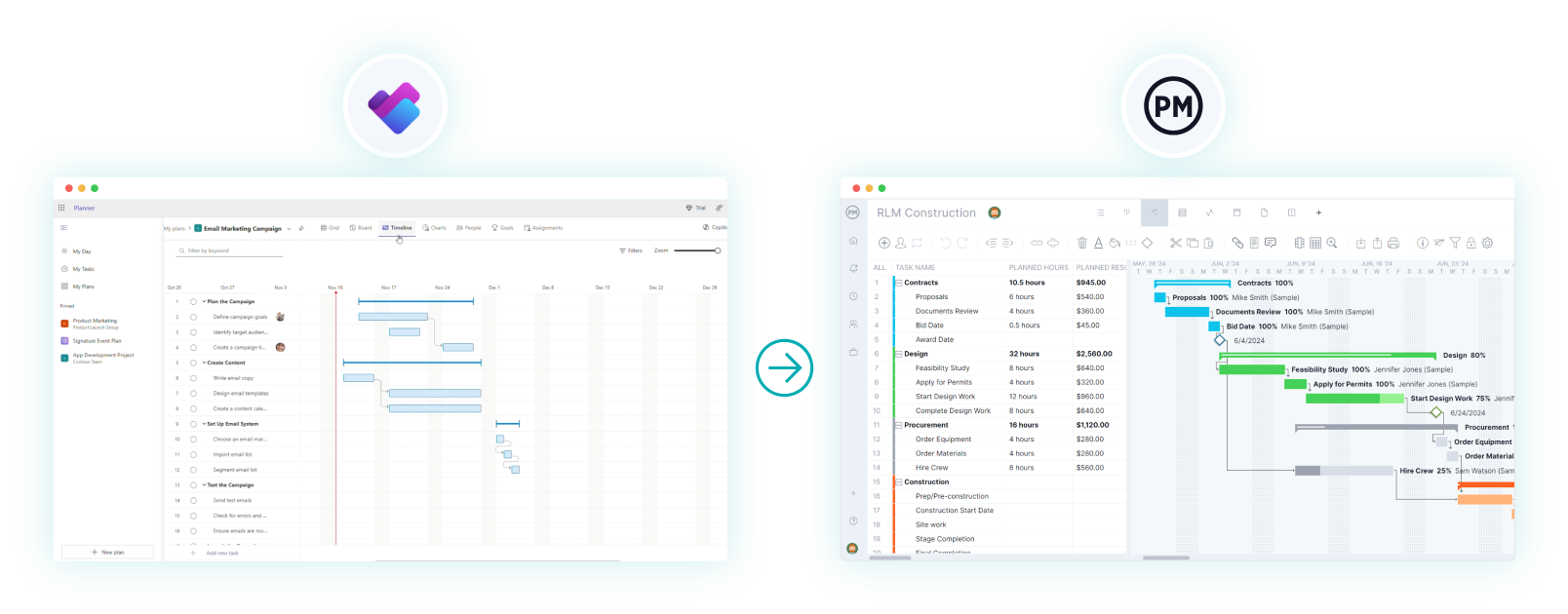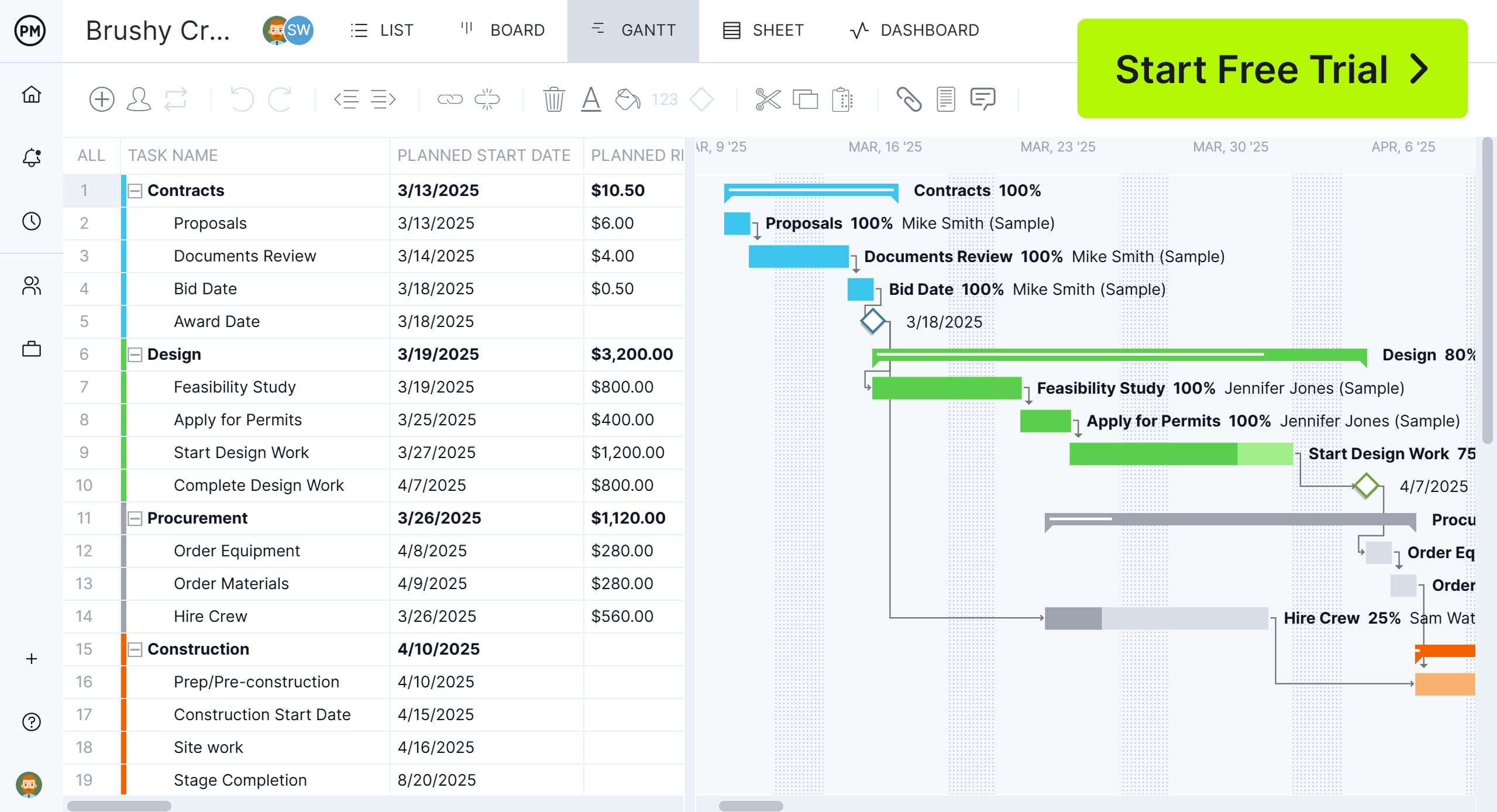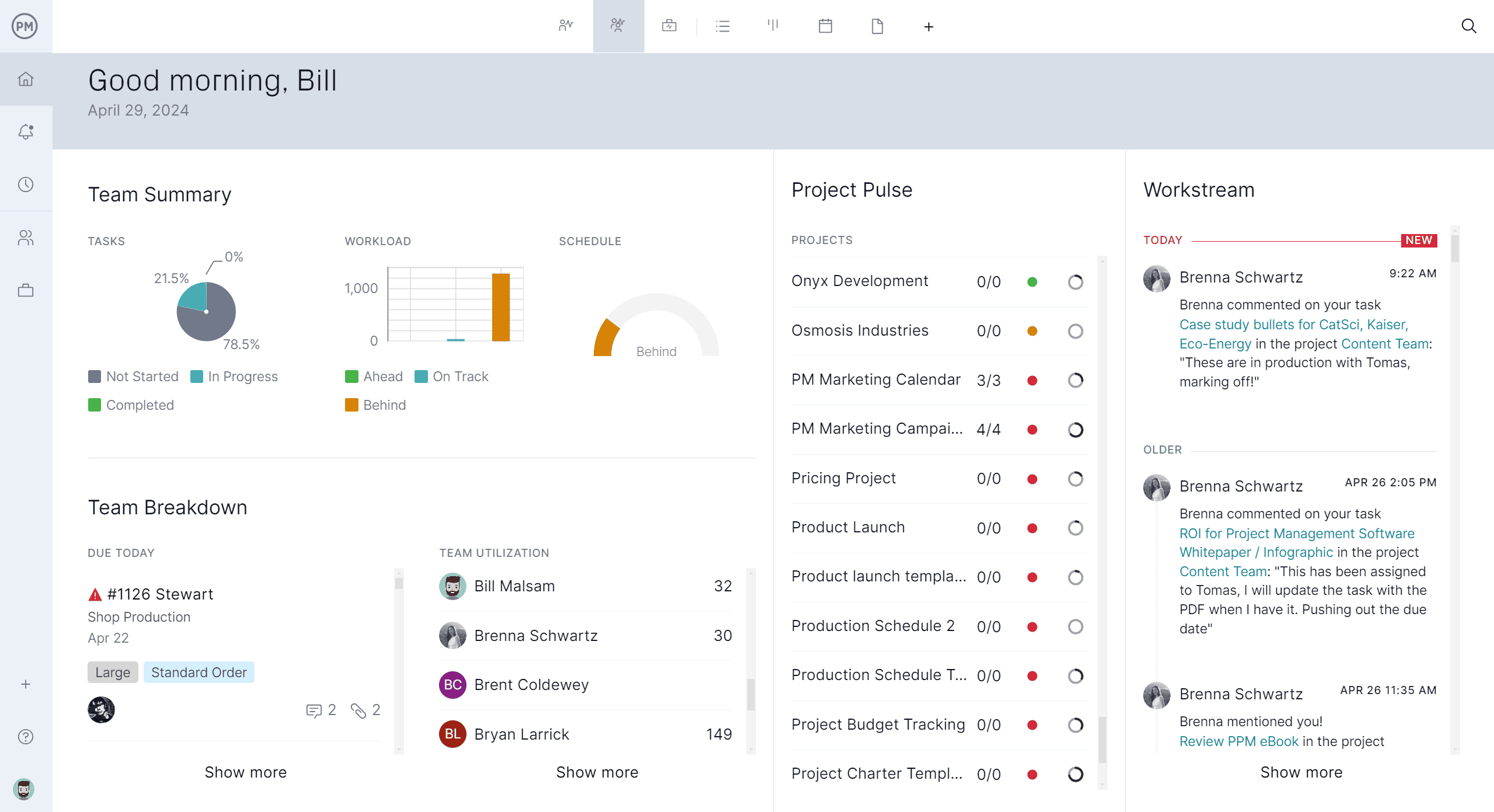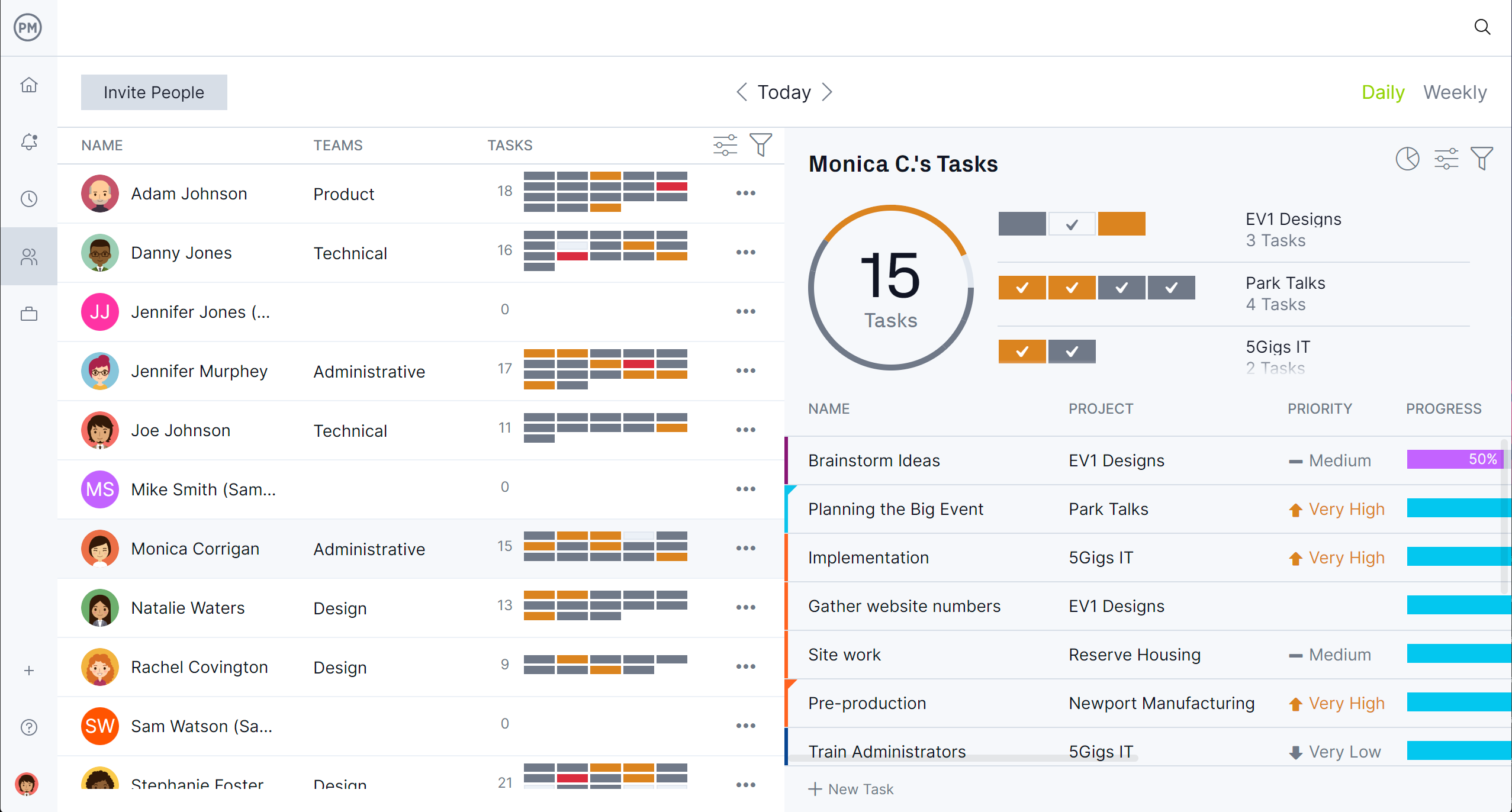In today’s fast-paced work environment, teams rely on project planning and task management tools to stay organized and hit deadlines. Microsoft’s suite of productivity solutions offers several options, and Microsoft Planner has long been a favorite for its simplicity and integration with Microsoft 365. With the introduction of Planner Premium, users now have access to an upgraded version of the tool that offers more advanced functionality for managing projects and tasks.
Planner Premium builds on the foundation of basic Microsoft Planner by adding features designed for more complex projects, including task dependencies, milestones and workload views. While MS Planner Premium still shares the same familiar interface as the standard version, it is positioned as a step up for businesses that need a more powerful solution without jumping to Microsoft Project. Understanding its uses, features and pricing is key to deciding whether Microsoft Planner Premium is the right fit for your team’s needs.
What Is Microsoft Planner Premium?
Microsoft Planner Premium is an upgraded version of Microsoft Planner that expands its task management capabilities for teams that need more than a simple kanban board. Planner Premium still lives inside the Microsoft 365 ecosystem but adds features such as task dependencies, milestones, people view for workload management and a timeline view that functions like a lightweight Gantt chart. It remains easy to use on both desktop and mobile, making it accessible for distributed teams.
However, while MS Planner Premium brings valuable improvements over the basic version, it still falls short of being a full project management solution. Advanced tools such as portfolio management, detailed resource planning and real-time dashboards are missing, which can limit its usefulness for larger or more complex projects. For teams that want multiple project views including Gantt charts, kanban boards, task lists and calendars in one platform, ProjectManager offers a more complete solution for planning, scheduling and tracking work.

Microsoft Planner Premium Pricing Plans
Microsoft recently introduced Planner Premium as part of its updated task management lineup, creating a clearer distinction between the free version included with Microsoft 365 and the new paid tiers. What was once a single offering is now divided into Planner Basic, Planner Premium (also called Planner Plan 1) and combined plans that bundle Planner with Microsoft Project for more advanced project management needs.
These new tiers give teams access to features like task dependencies, workload views and a timeline view that resembles a Gantt chart. However, the expanded options have also made pricing more complicated. Many users find it tricky to compare the cost of Microsoft Planner Premium with higher Microsoft Project plans, especially since some features overlap.
Before we explore the details, it’s key to understand that Planner Premium sits between the free Microsoft Planner Basic and the more robust Microsoft Project plans, making it a middle-ground solution for businesses that want more power without committing to full enterprise project management software.
- Planner Plan 1: $10/user/month, billed annually
- Planner and Project Plan 3: $30/user/month, billed annually
- Planner and Project Plan 5: $55/user/month, billed annually
Professionals looking for a powerful project management solution should know there are alternatives that do more than Microsoft Planner Premium. While Planner Premium has made big improvements with timeline views, task dependencies and workload charts, it is still limited for teams that need full project and portfolio management capabilities.
Microsoft Planner Premium is an enhanced version of Planner with grid, board, charts, schedule and Gantt-like timeline views. It allows task creation, assignments, due dates, priorities, buckets, labels, checklists and recurring tasks plus features like milestones and custom fields. These upgrades make it a step up from the free version, but Microsoft Planner Premium’s project management customization, reporting and portfolio visibility remain limited compared to ProjectManager.
ProjectManager goes beyond what Planner Premium can offer. Our software includes multiple project views such as Gantt, list, board, calendar and sheet plus the ability to link tasks across multiple projects. Teams can use custom fields, color-coded indicators and workload charts in one place. With resource management tools, baseline tracking and real-time dashboards, ProjectManager makes it easy to monitor progress without jumping between apps. Paired with AI Project Insights, teams can quickly spot risks, reassign work and keep projects on track. Try ProjectManager free today and experience a better way to plan and manage projects. Get started with ProjectManager today for free.

Microsoft Planner Premium Views
Microsoft Planner Premium expands the basic Planner views to give teams more ways to visualize work and manage tasks. Planner Premium adds timeline features, workload views and agile options so managers can plan around dependencies, balance team capacity and keep projects moving. Whether you need a quick status check or a detailed sequence of tasks, Microsoft Planner Premium offers flexible views that fit different workflows.
- Grid View — A straightforward list layout that organizes tasks in rows and columns for fast scanning and quick updates.
- Board View — The kanban-style board with buckets that lets you drag and drop tasks to reflect progress and priorities visually.
- Charts View — Visual charts that show task breakdowns by status, priority or assignee so you can spot bottlenecks at a glance.
- Schedule View — A calendar-oriented view that places tasks by due date so teams can plan around deadlines and key events.
- Timeline View (Gantt-like) — A horizontal timeline that displays task durations and dependencies for better sequencing and planning.
- People View (Workload) — Shows assignments across team members, helping you balance workloads and avoid overallocation.
- Goals View — Maps tasks to higher-level goals so teams maintain focus on strategic outcomes while tracking day-to-day work.
- Backlog & Sprint Views — Agile-friendly views for organizing work into sprints, managing backlogs and planning iterations efficiently.
- Critical Path View — Highlights tasks that determine the project timeline so you can prioritize work that prevents schedule slippage.
- Custom View Options — Filters, groupings and saved views that let you tailor how tasks are displayed for reporting or specific workflows.
Microsoft Planner Premium Features
Microsoft Planner Premium adds functionality that goes beyond the basic version, giving teams more control over task planning, scheduling and reporting. These features help organizations manage more complex projects while staying within the Microsoft 365 environment. With Microsoft Planner Premium, teams can work more efficiently, track progress accurately and collaborate without switching tools.
- Task Dependencies — Link tasks together so one cannot start until the other is complete, creating a clear workflow order.
- Milestones — Mark major project achievements to keep teams focused on critical deliverables and deadlines.
- Custom Fields — Add fields to capture project-specific data for better categorization and tracking.
- Conditional Formatting — Use color coding to highlight important tasks, risks or priority items automatically.
- Critical Path — View which tasks directly impact the project finish date to better manage schedule risk.
- Workload View — See how tasks are distributed across team members and reassign work to balance capacity.
- Goals Tracking — Connect tasks and projects to organizational goals for alignment and visibility.
- Backlog & Sprint Management — Manage agile workflows by organizing tasks into sprints and tracking backlog items.
- Advanced Filtering — Filter and group tasks by priority, assignee, progress or custom fields to focus on what matters most.
- Recurring Tasks — Automate repeating work to reduce manual entry and save time.
- Export to Excel — Export plans for reporting, sharing or offline analysis when needed.
- Integration with Microsoft 365 Apps — Connect Planner Premium with Teams, Outlook and SharePoint for seamless collaboration.
- Premium Templates — Start projects quickly with ready-made templates designed for common workflows.
- Task History — Track changes made to tasks to maintain accountability and understand project evolution.
- Web and Mobile Access — Manage work anywhere with a consistent experience across devices.
What Is Microsoft Planner Premium Used For?
Microsoft Planner Premium is used to manage more advanced projects and coordinate work across teams that need more than the basic kanban board view. It helps teams plan, schedule and track tasks while staying inside the Microsoft 365 ecosystem. By adding features such as task dependencies, milestones and workload views, Microsoft Planner Premium supports projects with greater complexity and multiple moving parts.
Organizations use Microsoft Planner Premium to visualize timelines, monitor progress and manage team capacity in one place. The tool is ideal for planning cross-functional projects, tracking deadlines and aligning tasks with goals. It gives managers better visibility into project health while allowing team members to collaborate, update tasks and share files without leaving the platform.
Pros and Cons of Microsoft Planner Premium
Pros of Microsoft Planner Premium
- Integrated with Microsoft 365 — Works seamlessly with Teams, Outlook and SharePoint for easy collaboration.
- Expanded Views — Adds timeline, workload and goal views beyond the basic kanban and grid layouts.
- Task Dependencies and Milestones — Helps manage more complex projects with better sequencing and key markers.
- User-Friendly Interface — Maintains the simple layout of Planner Basic while offering more advanced features.
- Mobile and Web Access — Keeps teams connected anywhere, making it suitable for remote and hybrid work.
- Custom Fields and Formatting — Allows better task categorization and visual prioritization for teams.
- Affordable Entry Point — Provides more power than basic Planner without the higher cost of Microsoft Project plans.
Cons of Microsoft Planner Premium
- Limited Reporting — Lacks advanced dashboards and analytics for deeper performance tracking.
- No Portfolio Management — Cannot manage multiple projects or provide portfolio-level visibility.
- Fewer Resource Management Features — Basic workload view is available but no detailed resource planning tools.
- Complex Licensing — Overlapping names and plans with Microsoft Project can confuse users comparing options.
- No MPP File Support — Cannot open or edit Microsoft Project files, limiting compatibility with some teams.
- Customization Limits — Offers only light customization compared to full project management platforms.
- Still Focused on Tasks — Designed primarily for task management rather than full project scheduling and control.
ProjectManager Is the Best Alternative to Microsoft Planner Premium
ProjectManager is the ideal alternative to Microsoft Planner Premium because it gives teams more power, flexibility and insight into their projects. While Planner Premium adds timeline views and dependencies, it still feels limited for teams that need true project management capabilities. ProjectManager offers five powerful views—Gantt, list, kanban board, calendar and sheet—so teams can plan, schedule and execute work the way they prefer without switching between tools. Tasks can be linked across multiple projects, giving managers a big-picture view that Planner Premium cannot match. This makes it easier to manage complex programs and keep every deliverable on track.
Advanced Resource Management
Microsoft Planner Premium offers a simple workload view, but ProjectManager goes further with detailed resource management. Teams can view workload charts to ensure no one is overallocated, rebalance assignments in just a few clicks and even set cost rates to track labor expenses. These features let managers control budgets and ensure resources are used effectively. Baseline tracking is also included, so teams can measure progress against the original plan and make informed decisions when projects slip off schedule—something Planner Premium does not provide.
Comprehensive Tracking and Reporting
Tracking project performance is critical, but Planner Premium’s reporting is limited to basic charts. ProjectManager delivers real-time dashboards that display task progress, workload, costs and more, automatically updating as teams work. Its customizable reports let managers create status, variance and timesheet reports that can be shared with stakeholders. Built-in time tracking makes it easy for teams to log hours directly in the platform, reducing errors and improving payroll accuracy. These insights empower leaders to act quickly, optimize performance and ensure project success—giving ProjectManager a clear advantage over Planner Premium.

Microsoft Planner Premium FAQ
Microsoft Planner Premium has become a popular option for teams looking to organize tasks and manage projects within the Microsoft 365 ecosystem. However, many users have questions about its functionality, compatibility and limitations. This FAQ addresses the most common questions to help you understand what Planner Premium can and cannot do.
Can MPP Files Be Imported Into Microsoft Planner Premium?
No, Microsoft Planner Premium cannot open or import MPP (Microsoft Project) files. While Planner Premium adds advanced task management features like dependencies and timeline views, it is not compatible with Microsoft Project files. Teams that need to work with MPP files must use Microsoft Project or a project management platform that supports these formats.
Is Microsoft Planner Premium Free?
No, Microsoft Planner Premium is a paid tier within the Microsoft 365 platform. While the basic version of Microsoft Planner is included with many Microsoft 365 subscriptions, Planner Premium (also called Planner Plan 1) requires an upgrade to access features like timeline views, task dependencies, workload management and milestones.
Is Microsoft Planner Premium the same as Microsoft Project?
No, Microsoft Planner Premium is not the same as Microsoft Project. Planner Premium is designed primarily for task management with added timeline and workload features, whereas Microsoft Project is a full-featured project management solution with advanced scheduling, resource management, portfolio oversight and reporting capabilities. Teams that need enterprise-level planning usually need Microsoft Project or a robust alternative like ProjectManager.
Is Microsoft Planner Premium a Project Management Tool?
Microsoft Planner Premium offers enhanced task management features, but it is still more of a lightweight project planning tool rather than a full project management solution. While it provides timelines, dependencies and workload charts, it lacks full project tracking, resource planning, portfolio management and advanced reporting, which are critical for larger or more complex projects.
Is Microsoft Planner Premium a Desktop App?
No, Microsoft Planner Premium is a web-based application that is accessible through desktop browsers and mobile apps. There is no standalone desktop software, so all tasks, projects and views are managed online through Microsoft 365, allowing teams to collaborate from anywhere but requiring an internet connection for full functionality.
Related Microsoft Planner Content
Want to learn Microsoft Planner? This lightweight tool is reviewed and alternatives rated in the following links. There’s also articles on how it compares to a Gantt chart and MS Project.
- What Is Microsoft Planner? Uses, Features & Pricing
- 10 Best Microsoft Planner Alternatives of 2025 (Free & Paid)
- Microsoft Planner Gantt Chart: How to Make a Gantt Chart in Microsoft Planner
- Microsoft Planner vs. Project: In-Depth Software Comparison
ProjectManager is online project and portfolio management software that connects teams whether they’re in the office or out in the field. They can share files, comment at the task level and stay up to date with email and in-app notifications. Get started with ProjectManager today for free.


